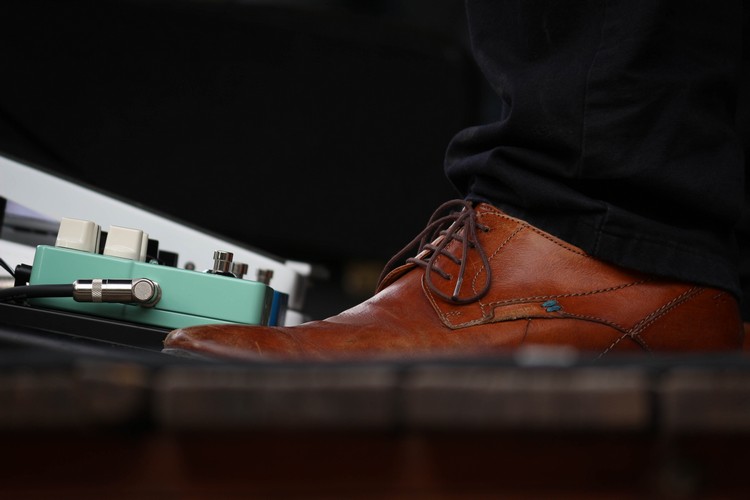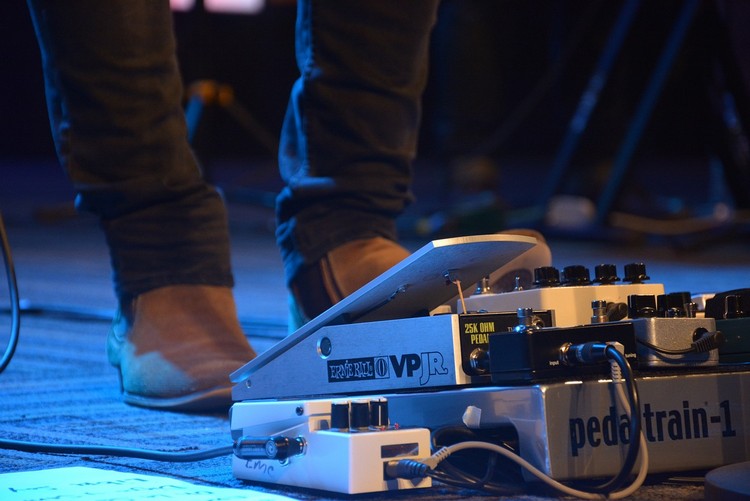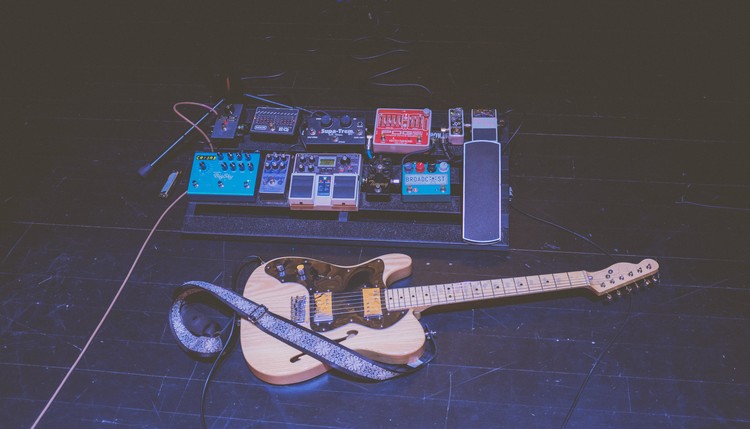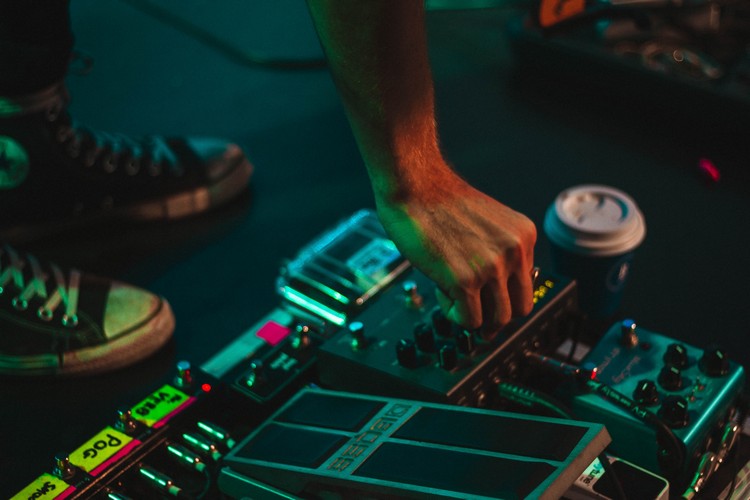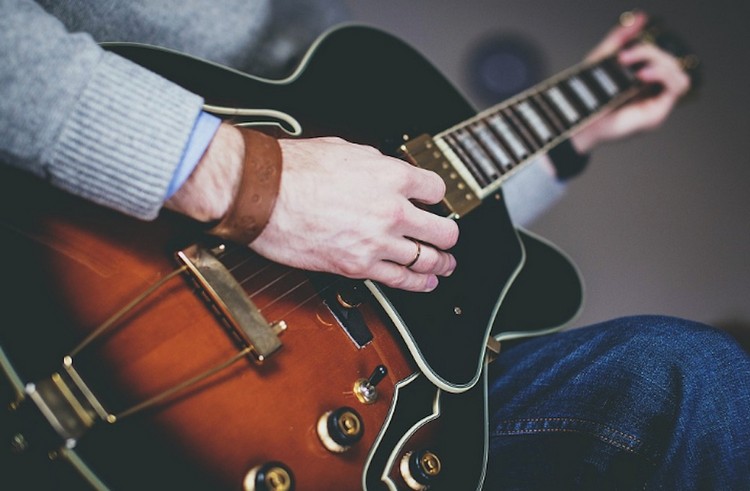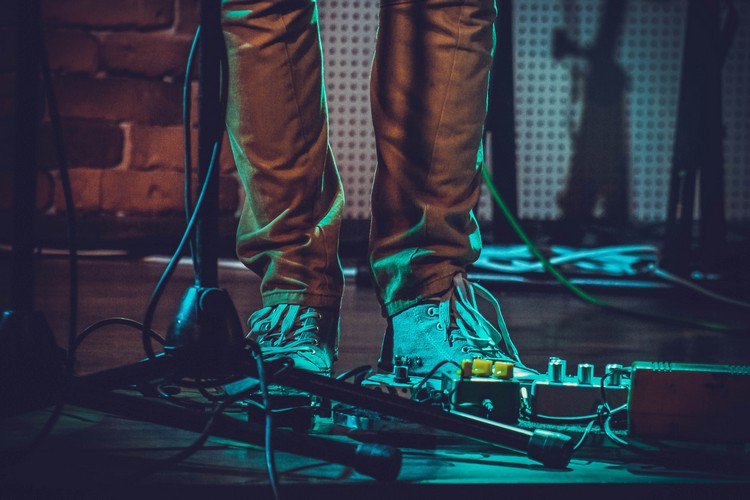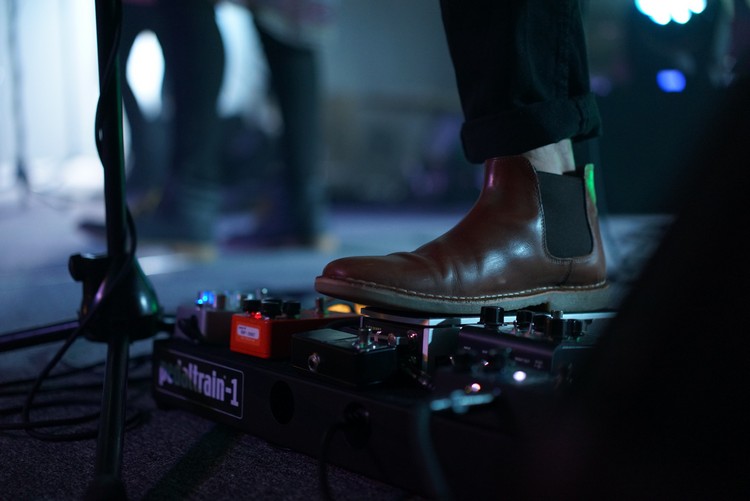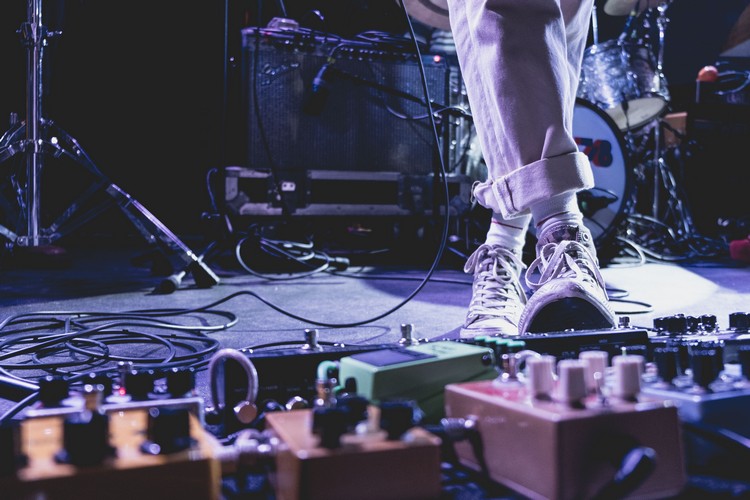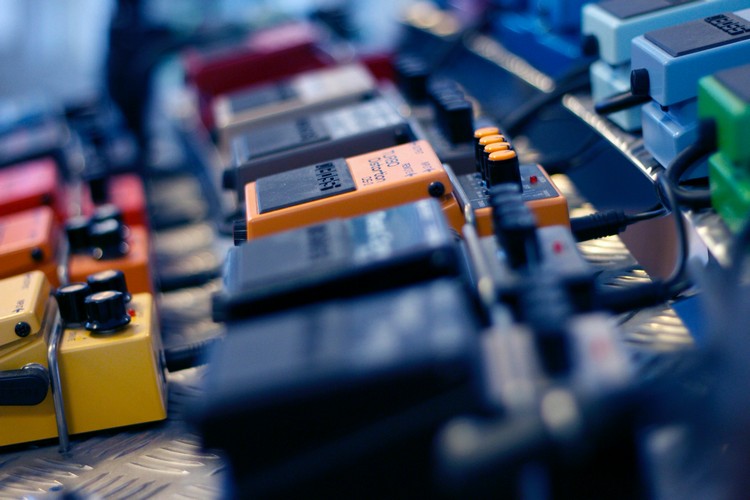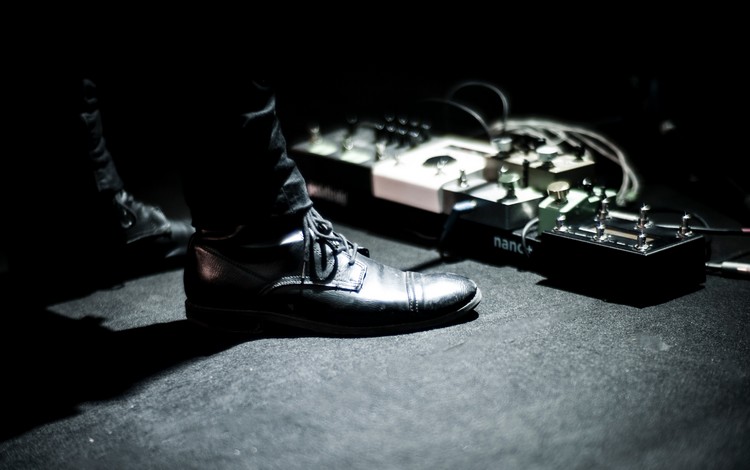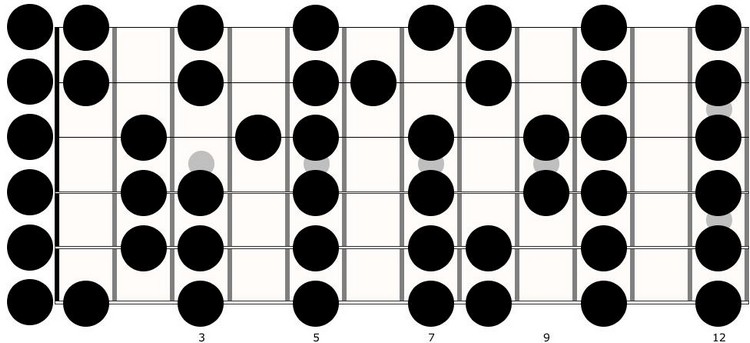A loop pedal is a great addition to our musical toolbox! Let’s explore and find out why!
In this free lesson you will learn…
- How to keep even time in your playing
- How to play guitar with a loop pedal
- A four chord, four-layer loop exercise
- An awesome new chord!
- A quick and effective 3-bar guitar solo
Over 250,000 guitar-learners get our world-class guitar tips & tutorials sent straight to their inbox: Click here to join them
What Is A Loop Pedal?
A loop pedal is a guitar pedal or musical device used to layer sounds together on top of one another.
These devices can come in a variety of different shapes and sizes, but they are all intended to be portable recording devices that we can use to lay down ideas.
- In the past, the loop pedal was seen as a device used for practice and hashing out new ideas.
- Lately however, many musicians have started using this incredible piece of technology as a tool for live performance.
The loop pedal is amazing because it allows us to record ideas on top of each other, and many new loopers now have miniature mixers built into them to help build a better and more consistent range of sounds.
A loop pedal will record anything that is recorded into it, and many have a variety of input jacks built in that you can make use of (XLR, 1/4in., Aux, etc).
So when we say anything, we mean anything.
Got a rubber chicken you want to loop? Stick a microphone in front of it and let that baby scream.
On the more reasonable side though, a loop pedal makes for great practice for musicians that want to experiment with recording different instruments but don’t want to dish out the money (and time) to learn the recording process.
The Beauty In Live Looping
In recent years, the music world has seen a rise in what we call “Loopers” – musicians who base their entire performance around a loop pedal and the layering of sounds.
- This unique approach to songwriting can make for some hypnotic and mesmerizing musical sets, and we highly recommend checking out a live looping concert if you’re ever able to.
- Using a loop pedal effectively doesn’t absolutely require a knowledge of music theory, but it doesn’t hurt to know a little bit.
Having a solid awareness of where your target notes lie makes it a lot easier to figure out what layer you’re going to add next in your performance.
Artists like Tash Sultana and Elise Trouw have made a name for themselves with the help of their trusty looping devices, and their approach to songwriting is incredibly unique as a result.
- The cool part about playing music with a loop pedal is that we need to think in terms of layers instead of musical sections.
- Most traditional songs carry a structure that involves jumping back and forth between a verse and a chorus, and either ending with a bridge or a chorus.
- Live looping doesn’t quite work like that.
A ‘first layer’ of a loop pedal song can be whatever you want it to be, but it’s best to start out with a chord progression that will take the song somewhere over time.
This is where music theory can help.
Let’s talk more about that below!
Learn 12 EASY beginner chords with our popular guide

✅ Stop struggling. Start making music.
✅ Learn beginner-friendly versions of every chord.
This is our most popular guide and it will improve your chord ability quickly! 😎
Get your own personalised guitar-learning plan 🎸
Get a custom guitar-learning plan here: Click here for GuitarMetrics™
World-Class Guitar Courses 🌎
Learn from the world's best guitar educators: Click here for our guitar courses
Basic Music Theory & Live Looping
Learning how to use a loop pedal effectively can be made a lot easier with some music theory knowledge at your disposal.
If you’re feeling like clicking out because music theory isn’t your cup of tea, let us break a few things down to help first:
A great rule of thumb to keep in mind is how chords progress within a scale. Knowing this musical principle makes the process of live looping a lot easier.
Let’s look at the key of C major, for example.
This is an easy key to study because it has no sharps or flats.
The chords of C major are as follows:
C major
D minor
E minor
F major
G major
A minor
B diminished
A great thing to keep in mind is that this order of chords plays out the same way in every major key.
Let’s take a look at the chords of the minor scale next.
The minor scale follows a different order of chords than the major scale, and we’ve got them laid out for you below.
We’re going to look at the minor equivalent of the C major scale (more commonly referred to as the Relative Minor) and the chord types it uses:
A minor
B diminished
C major
D minor
E minor
F major
G major
Pro Tip: Did you notice how all the chord types are the same, just in a different order?
Every major scale has a relative minor scale exactly 3 frets behind the major root note.
(ex. C sits at the 8th fret on our E string, A sits at the 5th fret)
This principle is important to know as it helps us determine what chords work best for a progression. Learning a few scale essentials will help us expand on this knowledge.
Click here to check out our article on beginner-level guitar scales.
How To Layer Sounds Using A Loop Pedal
Layering is how we create massive atmospheres and compelling songs with a loop pedal, and it’s important to experiment with different sounds to find what we like.
Start out with a chord progression like the one you’ll find in our Layers section below, and then add selections of notes from different points on the fretboard.
Pro Tip: Loopers using a foundation of audio mixing knowledge to keep their sound even.
We can view our guitar in three sections based on our strings:
E & A: Bass
D & G: Mid
B & E: Treble
IMAGE 7.JPG
Viewing our guitar in this way helps us divide up the sounds we play to create an even and balanced sound while playing with a loop pedal.
Use your lowest strings to provide bass to your mix, your high strings for ambience, and your middle strings for colour and definition.
- Add some chords to this mix and you’ve got a recipe for a great loop track!
- Experiment with this musical principle to see what kind of sounds you can create.
Pro Tip: As we’ve discussed, a loop pedal will accept any audio that is fed into it. If you have some guitar pedals kicking around, we suggest building a pedalboard with the loop pedal at the end of the chain.
Delays, reverbs, pitch shifters, compressors and volume pedals are just a few guitar pedals that pair extremely well with a loop pedal.
The exercise in this lesson is lengthy, so let’s break it down first.
How To Break Down This Loop Pedal Exercise
Loop pedal exercises like the one we’ve designed below are broken down into their essential sections by layer so that we can understand each piece of music we feed into the pedal.
- We’re going to start from the ground-level and build our way up to a complete loop using chords, a bassline, ambience on the high strings, and a semi-improvised solo at the end.
- Keep in mind that your timing will be the most important part of this exercise.
Before we begin, practice playing two chords of your choosing. Record one bar of these two chords into your loop pedal in even 3/4 time by counting 1 – 2 – 3.
We open the loop by pressing once on our pedal, and we can close it by pressing the pedal again.
- Closing the loop on time is important, and for this exercise we should aim to close the loop on the 1 of the next bar.
- Once you’ve got this exercise down, scroll down to the exercise below!
Pro Tip: Play this exercise on a clean channel so that you can hear the details.
Keep the distortion and drive pedals off for now, as they can be difficult to control in your mix.
Loop Pedal Layer I – Chords
To keep things in line with the rest of this lesson, we’re going to stick to the key of C major as it will be easy to explain the theory in this way.
- You will see roman numerals next to a lot of the notes and chords in this exercise – these numbers correspond to the note’s scale degree within C major (ex. C is I, D is II, E is II, and so on).
- We are going to play this exercise in 3/4 time, meaning we will count 1 – 2 – 3 for the length of each bar.
You can follow the following strumming pattern if you like:
Down – Down – Up – Down – Up
1 2 3
Our chords for this exercise are:
C major ( I )
G major ( V )
E minor ( III )
F major7/C ( VI )
Pro Tip: The ‘/C’ part of F major 7/C refers to the chord being rooted on C instead of F. This simply means you are playing an F major7 that begins on the note C.
Count two bars of three for each chord and record it on your loop pedal.
Once you’ve done that and you’ve got a solid rhythm recorded, move on to the bassline in the next section.
Loop Pedal Layer II – Bassline
Bass is important when it comes to looping, and you don’t need a bass guitar or a pitch shifter pedal to create a great bassline. Just use your thickest strings!
The bassline illustrated below is counted the same way as the chord section, and we are simply playing the lowest notes of the chords we’ve outlined above.
Pro Tip: You will notice that the last chord of the progression is an F chord that doesn’t start on F. We’ve included that chord specifically because the last note you emphasize in this bassline is an F (1st fret – low E string).
Once we add the bassline in, you will notice that the mix begins to fill itself out a lot more.
Download our lead guitar cheat-sheet to make things easier
It's hard to understand which scales work with which keys.
So we created a cheat-sheet! A key and scale-finder that you can use again and again.

Get your personalised guitar-learning plan 🎸
Get a custom guitar-learning plan here: Click here for GuitarMetrics™
World-Class Guitar Courses 🌎
Learn from the world's best guitar educators: Click here for our guitar courses
Loop Pedal Layer III – Ambience
This is where things start to get fun.
We can use the upper register to create ambience and atmosphere with our loop pedal and provide colour to our mix.
- In this example we will use the top two strings to highlight the chords we have already recorded.
- You will notice that everything we play on top of our chords is centered around those chords in this example.
- You don’t have to follow this example to the letter, but it helps to keep things colourful in the mix.
Turn on your delay or reverb pedal and play this example on your B and high E strings:
Pro Tip: If you are playing an electric guitar, you can add ambience up above the 12th fret for some extra shine in this loop pedal exercise.
We’ve included an image of the C major scale in a few different sections of this lesson for your reference.
- Try using different notes from this scale to mix things up and create new colour combinations with your loops!
- This chord progression can be played a variety of different ways, and it can be stylized differently as well.
Remember that constant experimentation is the key to unlocking the potential of both your guitar and loop pedal!
Loop Pedal Layer IV – Notes & Soloing Over Recorded Layers
Now that we’ve established three essential layers to our loop. It’s time to get gnarly and play a lot of notes!
We’ve included a guitar solo for you to play below, but you can play whatever you like using the notes from the C major scale above and below.
Pro Tip: Explore the entire fretboard when you play, and try to avoid falling into the trap of only playing in box shapes (4 to 5 fret scale shapes).
Box shapes are great for learning scales, but they will ultimately limit us in terms of our overall progress in the world of soloing.
Avoid creating bad habits you can’t get out of, and try this solo below over your recorded loop.
In order to create a wholesome solo over our loop, we want to try and incorporate different techniques within our solo.
Using a loop pedal gives us a great opportunity to experiment with ideas that go well past guitar riffs, so throw the whole kitchen sink into the mix!
Pro Tip: The beautiful part about a loop pedal is that there is no limit to what you can create with it. Even the smallest, most budget-friendly looper will allow you to record a massive amount of loops to play with.
Here are some of our favourite loop pedals:
BOSS RC-3
BOSS RC-30
TC Electronics Ditto Looper
EHX 45000
EHX 95000
Click here for an article about finding the right loop pedal for you!
Where Do I Go From Here?
Not ready to put down your new loop pedal just yet? Good! Keep practicing!
We recommend:
- Try experimenting with more layers of sound
- Hook up your other guitar pedals to find new sounds to loop
- Experiment with delay pedals to create luscious loops that sound huge
- Use a reverb pedal to create atmosphere
- Use your volume knob to help ‘mix’ your sounds together so they don’t compete for volume space.
Recommended Resources
If you loved this free loop pedal lesson, you’re in for a treat. We’ve got loads of free guitar lesson content for you at National Guitar Academy, and we’ve laid a few out for you below:
- Capo Chart
- Music Theory For Beginners
- Guitar Chords – The Ultimate Guide
- Guitar Arpeggios – The Ultimate Guide
- Intermediate Guitar Lessons
What Type of Guitarist Are You?
Take our 60-second quiz & get your results: Take The Quiz
Join the world's best online guitar school 🌎
- Get your own personalised guitar learning plan (customised just for YOU).
- World-class online guitar courses. Learn at your own pace.
- Community Campus & Learning Forum - A friendly community! Connect with our team & students. 😊
- Beginner Song library with chordsheets, tabs and tips. (Songs suitable for all levels!)
- Regular live streams, seminars and Q&A sessions - Learn from world-class guitar educators. Get all your questions answered!
Click here to learn more about National Guitar Academy membership 
Cool Guitar T-shirts 😎
Look cooler! Check out our merch: Click here to see our merch store
Want free guitar tips and video lessons delivered to your inbox?
Join over 250,000 other guitar learners and subscribe to our guitar-tips-by-email service. (It's free.)
We'll send you a series of lessons that will move you to the next level of your guitar journey.
Learn how everything fits together quickly, easily and effectively. We share ninja tips (for instant fun!) but also timeless fundamentals that will deepen your understanding.

Popular Lessons
How To Learn Guitar: An 11-Step Programme For Beginners
How To Choose The Perfect Beginner Guitar
More Cool Guitar Stuff
Learn about National Guitar Academy: About Us
Visit our YouTube channel for fun guitar videos.
Join us on Facebook for daily guitar tips.
Listen to our Learn Guitar Podcast for rapid guitar progress.
Check out our free chord lessons.
Get our best guitar tips & videos
Where should we send it?
Where should we send it?
Get our best guitar tips & videos

